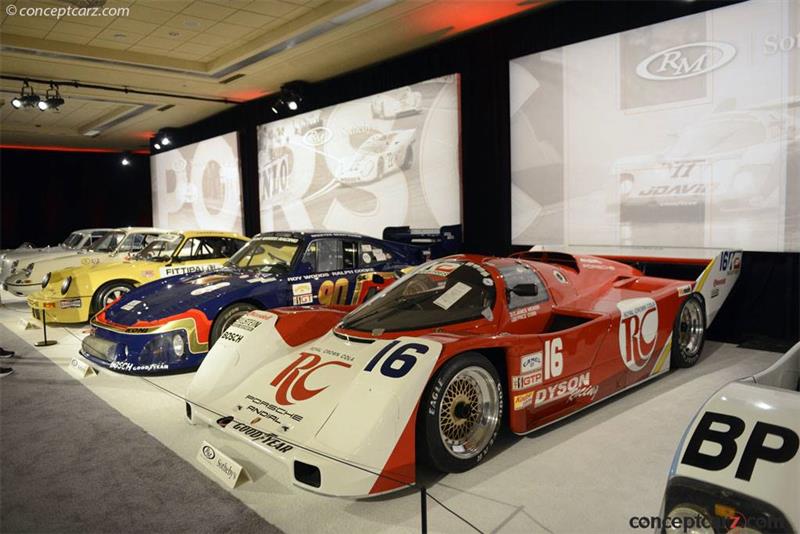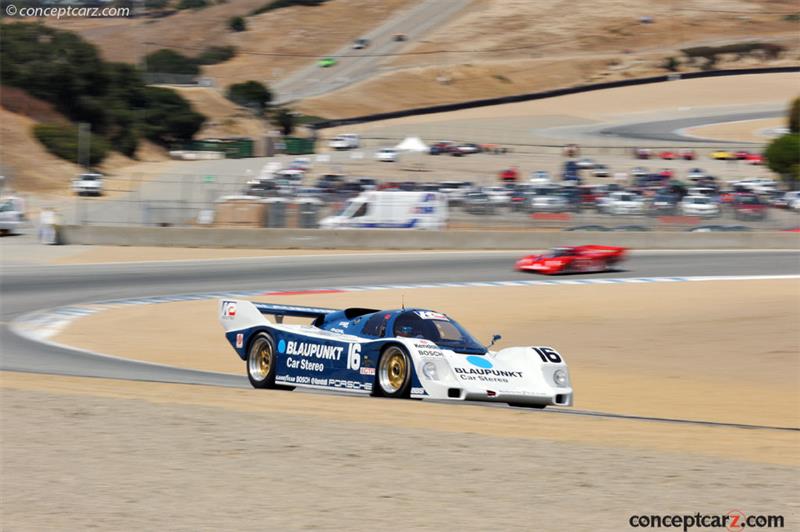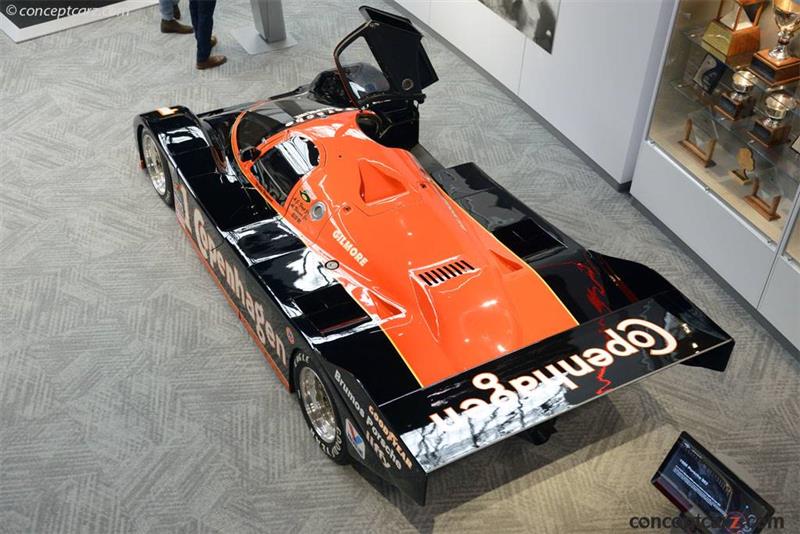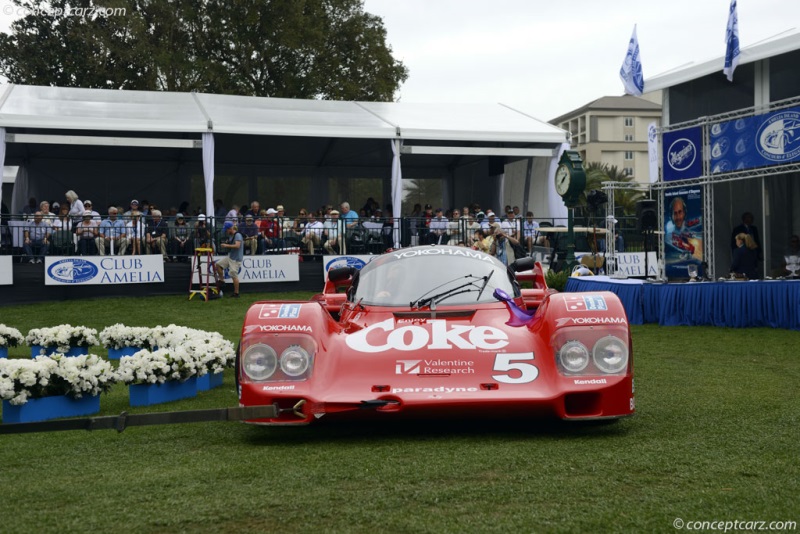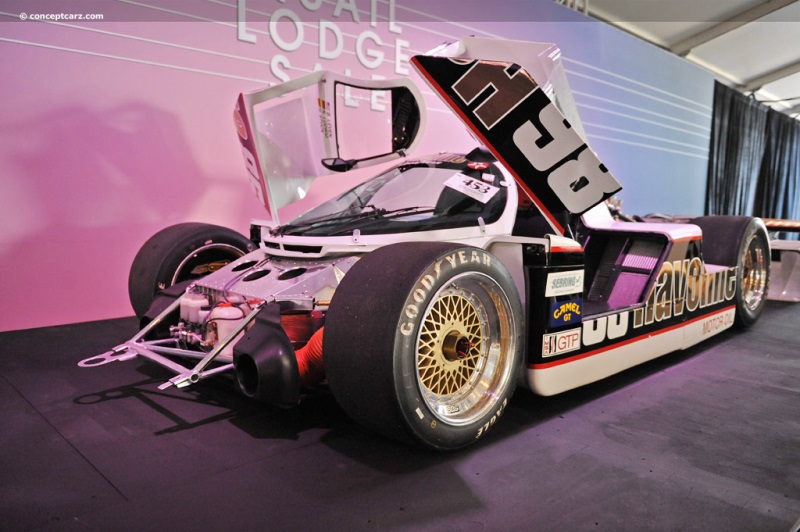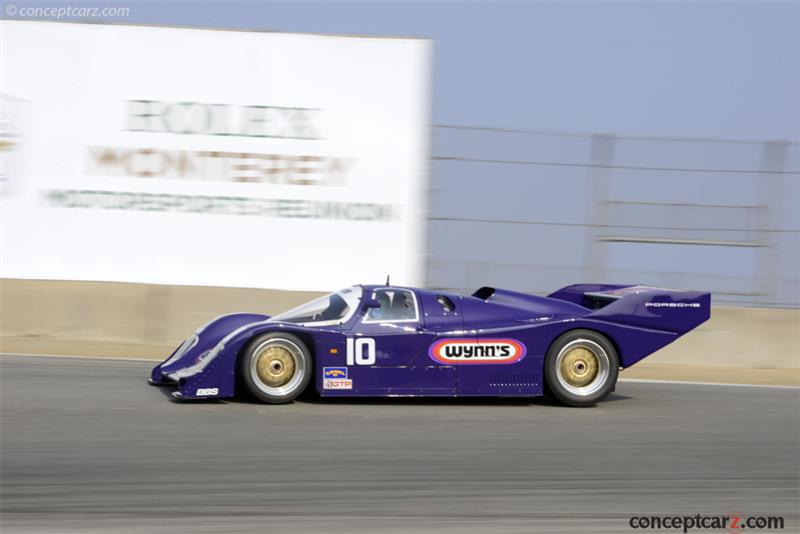The Porsche 962 endurance prototype coupe, introduced in 1984, quickly became one of the most dominant and successful racing designs in history. Derived from the earlier Type 956 Coupe which had been introduced in 1982, developed for Europe's World Sportscar Championship Group C, it was developed as an entry for IMSA's GTP series and initially powered by a derivative of the highly successful 2.8-liter, air-cooled flat-six 935 engine with a single KKK turbocharger. 
Coupe
Chassis #: 962-123Instead of using a tubular spaceframe chassis design as they had in the past, the 956 was given an aluminum monocoque. It retained the Type 935 flat six-cylinder engine of the 936, to which twin KKK turbos and an all-synchro five-speed gearbox were fitted. The inboard rear suspension allowed for the creation of two large venturi channels to maximize ground effects underneath the car. Reputedly, the 956 generated over three times as much downforce at speed as the 917.The 956 had not satisfied the requirements and regulations of IMSA GTP, mainly the location of the pedal box, which was positioned ahead of the front axle, and the racing engine. The 962 was essentially a long-wheelbase version of the 956 with the pedal box behind the front axle. The wheelbase changed but the overall length remained the same due to shortening the nose. The suspension was nearly identical with double wishbones at the front with the rear using lower wishbones in-board, and rocker actuated springs and dampers. IMSA GTP regulations stated that the engine was to be a production-based unit. So Porsche engineers based the 962 engine on the Porsche 911 Turbo. It was given a displacement of just over 2.8 liters and using the 1.4x turbo equivalency formula, the 962 was grouped into the Under 4-liter category. The single camshaft engine was produced approximately 680 horsepower and was backed by a five-speed gearbox.
Coupe
Chassis #: 962-123A single works 962 preceded the customer's cars and was built for testing and development. Mario and Michael Andretti entered it in the 1984 Daytona 24 Hours where they qualified on pole position with a time that was nearly two seconds faster than the second-place car. This would be the only race for the Porsche 962 prototype and the only Works team entry in GTP. Porsche left the IMSA GTP championship to be contested by privateers while they focused its efforts on the World Championship. Perhaps to be expected from an untested car, the 962 retired on lap 127 from Daytona due to engine and transmission problems. The production examples were ready beginning in April of 1984. During its inaugural year, the 962 would score seven victories. American Preston Henn entered the IMSA GTP class at the 24 Hours of Le Mans in 1984 where it was driven by Henn, Michel Ferte, and Edgar Doren. Their day ended on lap 247 after ignition failure and received an overall classification of 26th position. To create more competition, IMSA eased its restrictions by 1985, allowing the Porsche to run larger 3.2-liter engines that offered 720 horsepower. Preston Henn entered a 962 at the seasons opening Daytona 24 Hours and scored an overall victory. The car won again a month later at the Sebring 12 Hours. The Porsche would win nearly every race (all races except one) in the GTP class during the 1985 season. This dominance would continue until the start of the 1988 season when Nissan introduced its new Works entry. 
CoupePorsche introduced the 962C in 1985 for the World Sportscar Championship. Ironically, it would lose to its 956 sibling, which had already earned WEC top-honors on four occasions. In 1987, a 962C powered by a new 3.0-liter engine claimed overall victory at the 24 Hours of LeMans, scoring Porsche's seventh consecutive victory at the race. IMSA attempted to level the playing field in the late 1980s, which allowed the 962s to run twin turbochargers and water-cooled cylinder heads, although their air intakes were limited to 36 millimeters.Porsche allowed customers to build new and replacement chassis, and modifications to the original design. Popular changes included honeycomb aluminum sections for increased strength and rigidity, revised bodywork, improved aerodynamics, and various mechanical changes. Joest Racing built a pair of highly modified 962s for the IMSA GTP Championship in 1993 in hopes of better competing with Jaguar and earned the 962's final sprint race victory (at Road America) that season. 
CoupePorsche's racing department built a total of ninety-one examples of the 962 between 1984 and 1991, with seventy-five of them being built as customer cars and 16 being used by the factory team. Like the 956 program, the 962s built for the works team began with chassis 001 and received many technically advanced features. The customer cars began with chassis 962-101 and its mechanical setup was more standardized. The factory 962s typically wore the Rothmans colors, though for the 1988 24 Hours of Le Mans the works team cars donned a new Shell-Dunlop livery. Even after Porsche withdrew its factory entry in 1988, they continued to build additional 962C chassis for privateers.The Porsche 962 would score 48 of 68 victories in IMSA GTP between 1984 and 1987, including 1-2-3 finishes at both Daytona and Sebring for three consecutive years. They earned two outright Le Mans victories, and numerous victories and podium finishes in Group C. The Porsche 956 and 962 won Le Mans six times, finishing 1-2-3 every year except in 1987 when they were a mere 1-2. Campaigned by the Porsche Works team and well-funded private entries, the 956 and 962 captured the World Endurance Manufacturers' and Drivers' Championship (1982–1985), the World Sports Prototype Manufacturers' and Drivers' Championships (1986–1987), the IMSA GTP Manufacturers' Championship (1985–1988), and the IMSA GTP Driver's Championship (1985–1987), along with numerous other important victories and series championships.The Porsche 956 and its close sibling, the 962 enjoyed an international career that spanned some thirteen years, including no less than seven Le Mans wins and five World Sportscar Championship titles. They are arguably the greatest long-distance sports racing cars of all time.
by Daniel Vaughan | May 2020

Coupe
Chassis #: 962-123
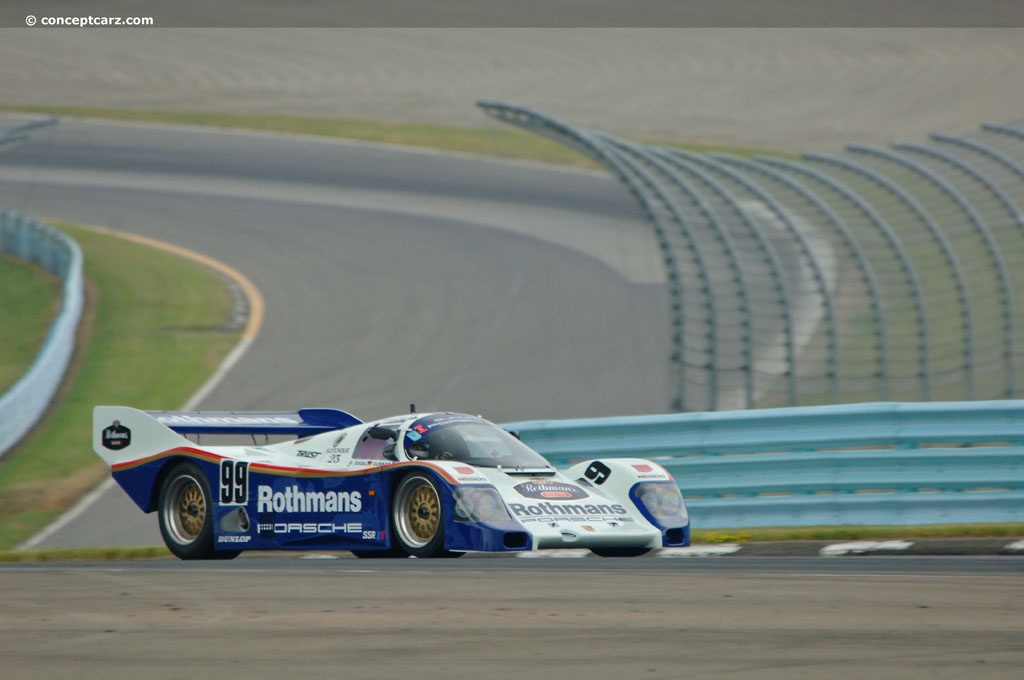
Coupe
Chassis #: 962-123

Coupe
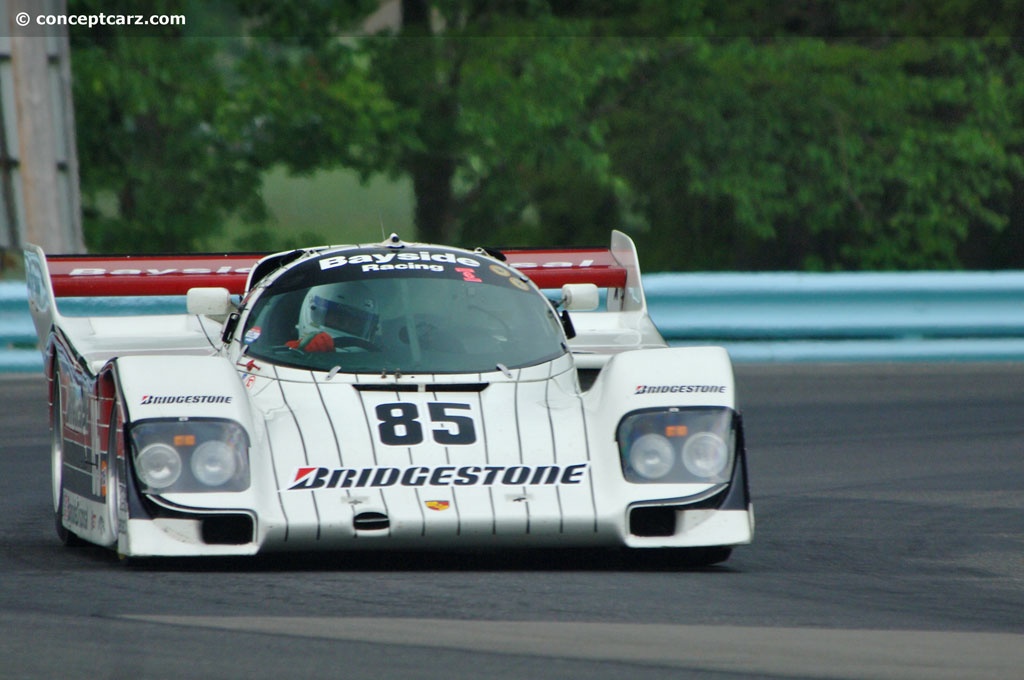
Coupe
by Daniel Vaughan | May 2020
Related Reading : Porsche 956 and 962 History
Porsche created the 956 during the early 1980s for FIA Group C competition. The design and components of the vehicle would further evolve over the years and become known as the 962. The 956 project was led by a very determined and experienced project manager named Norbert Singer, who had his sights set on winning the 24 Hours of LeMans race. With Derek Bell and Jacky Ixckx, the factory team drivers,....
Continue Reading >>
Continue Reading >>
1986 Porsche 962 Vehicle Profiles
Recent Vehicle Additions
Related Automotive News

Petersen Automotive Museum showcases the Porsche 956 and 962 in final Luftgekühlt exhibit
The seven-car display in the Petersen Vault, which runs now through November 19, includes the Miller 962 that won the Rolex Daytona 24 in 1989 and the Coke-liveried 962
The Petersen Automotive Museum has opened the second of two Luftgekühlt...

Porsche Rennsport Reunion VI : Highlights: of man and machines
Stuttgart. The Porsche Rennsport Reunion VI at Laguna Seca (USA) has more than 60,000 fans of the brand from Stuttgart spellbound. At the four-day event in California, avid motor racing enthusiasts in legendary vehicles and unforgotten works...

The 2019 Amelia Island Concours Honors Porsche 962 Dynasty
The 24th annual Amelia Island Concours dElegance will honor and celebrate the 35th anniversary of one of the greatest and most accomplished sports racing cars of all time. Porsches landmark 962 reigned as the king of international prototype racing...
Chip Ganassi Garners RRDC's 2017 Phil Hill Award
DAYTONA BEACH, Fla. (Jan. 26, 2017) – Chip Ganassi, a former race-car driver who is now one of the most successful and innovative race team owners in the world, was honored by the Road Racing Drivers Club with the 2017 Phil Hill Award. RRDC president...
RRDC VOTES IN 37 NEW MEMBERS FOR 2013
HILLIARD, Ohio (Nov. 7, 2013) - Thirty-seven race-car drivers and motorsports professionals have been voted into the Road Racing Drivers Club in 2013. The group includes 13 Regular Members from the open-wheel and sports-car racing ranks, 20 Associate...





























